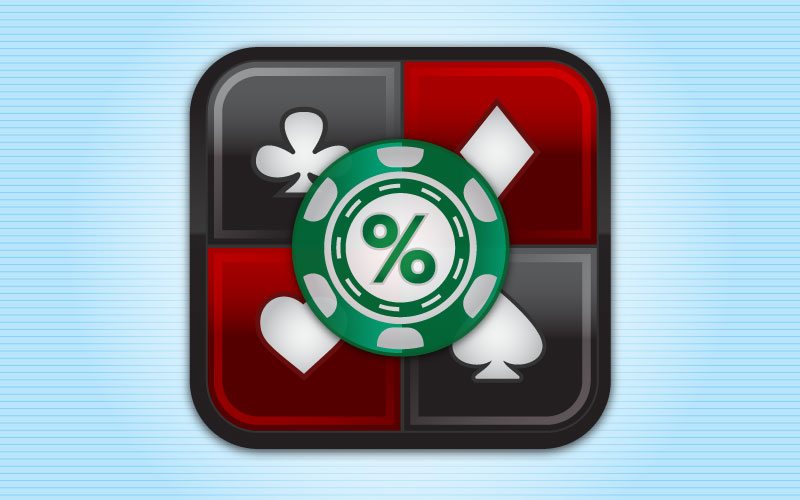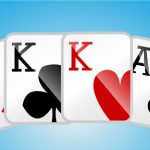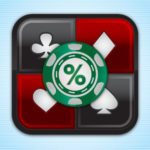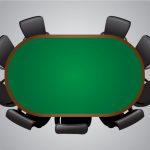What is Expected Value? (EV).
Poker is a mathematical game. And, if you approach it as such, there is opportunity to make it a profitable game. Furthermore, if you delve deep enough into the analysis, you can ‘tweak’ your game enough to understand how to maximize your earn rate by always maximizing your play by taking the most +EV situations.
NL SNGs are a unique style of poker in relation to EV calculations because you have the opportunity to calculate EV at any moment due to the combination of tournament style play and the finality of moving allin, and doing so often. The point of this post is to talk about $EV (tournament EV) as opposed to cEV (chip EV). I’m not going to get into the “how to calculate” tournament EV money for SNGs, because it is complicated, and there is now a calculator you can buy to help you do it. But, I want to focus on what the results mean.
Expected Value calculations essentially are weighing all the possible outcomes, weighting the more likely outcomes, and coming to a conclusion. It is an average of all the likely outcomes. Sometimes, we may make a –EV decision, and be rewarded for that decision. That happens often, but it does not mean that’s the best financial decision. For example, let’s say our opponent flashes us his hand. He has ducks in the SB. And he moves allin. We look down, and we see AKo. Assuming the blinds are negligible, we should fold here, because our play has a negative expectation. To be specific:
Blinds 10/15 – first hand of tournament. Preflop, hero has AKo.
Folded to SB who moves allin with 22.
Calling here yields an $EV of -1.1% (according to SNG powertools).
What does that 1.1% mean? It means 1.1% of the equity prize pool. The equity prize pool is the sum of the entire money that is being played for. In a $33 buyin on ACR Poker, the prize pool is $300. Thus, if we apply this to a $33 buyin, this means over the vast majority of time, calling here is costing us $300 x 1.1% = $3.30.
So how can we put this to use? In my example above, we used a situation with complete information. It is nearly never that we are presented a situation where we have complete information. So in situations where we need to calculate EV, we need to put together a hand range, and then calculate EV against that hand range. Unfortunately, the process of putting together a hand range is part art form and part science. It is never actually precise. But the players who are more adept at predicting hand ranges, are the players who are more able to maximize EV decisions. One of the most common mistakes in putting together hand ranges is assuming players play too tight or too loose. It’s finding that middle ground. Furthermore, often times a player may call with a hand like KQ, but would never call with a hand like 22, and makes it difficult to account for that. What’s helpful in these situations is that the range itself will account and make up for some of the shortcomings.
Through my experience, I have played enough hands to feel confident with the hand ranges I choose for my calculations. Others may use different calculations. It is important to emphasize, your selection of hand ranges is imperative to making an important $EV decision. Failing to do so will lead to mistakes, and loss of capital.
For our example, I am going to use the hand that is being debated.
Hero: t1445
Button: t1645
SB: t1235
BB: t3675
Blinds 100/200
Preflop: Hero is dealt K Q
Q
Hero???
The only thing we need to consider here are the calling ranges of our opponents. Making good decisions here is the most important.
Button: Of the three, button is likely to be the tightest. I would use TT+, AJ+. That’s probably too tight, but certainly not too loose.
SB: The range of the SB is the most debatable of the 3. Psychologically, the SB knows he has to make a move, or he is out, unless he thinks he can wait and let someone else make a mistake. Anyhow, it’s been my experience that these guys are certainly calling with hands like 88, and ATs. Frankly, I think this is too tight, because my confidence trails below 88, and under ATs, but is strong with those hands. For instance, I have seen 33 call here, but I don’t want to put 33 in the range because it makes it too wide. I think a good range is 66+, AT+. This should help cover some of the miscellaneous hands that occasionally occur, like KQs, and 33.
BB: This is another crucial adjustment. It is absolutely a mistake to think big stacks are tight. They have the liberty to be loose because they can survive a loss. Furthermore, there is the mental thought that they feel compelled to defend their blind. And there is the naughty pleasure of knocking someone out with a hand like 22. Whatever the reason, it is often a mistake to think that the bigstack is a tighty. The one thing to keep in mind is the pot odds when considering ranges here as well. In this situation, BB would have 1.4:1 pot odds to call your push. Another way of saying that, is that he only needs to win 41% of the time for his call to be profitable. The range I’m using here is 44+, A7s+, A9o+, KJs+
The results of the calculation (via SNG Powertools):
$EV = -0.3%
That seems pretty insignificant. Better yet, it seems almost neutral. I have spent some time chatting with the creator of the SNG powertool, and the only thing we have in conclusion is that it’s a mistake to make a decision that is either negative $EV, or to not go with a decision that is a +0.5% EV result. Between there, there is some wiggle room.
Final thoughts:
When discussing whether a decision to push or fold, based on EV is being had, it is senseless to battle over a gut opinion whether it is negative EV or positive EV, or whether risking an allin is worth it because of future EV. If you want to make a constructive argument as to why you think your decision is better than another, your argument will carry more merit if you get down to the root of the problem. You need to illustrate your reasons for why you think so-and-so’s calling range is X, and not Y. Once you are able to make this transition, you are beginning to think like a pro.
Good luck at the tables.
Scuba Chuck
Submit your review | |









